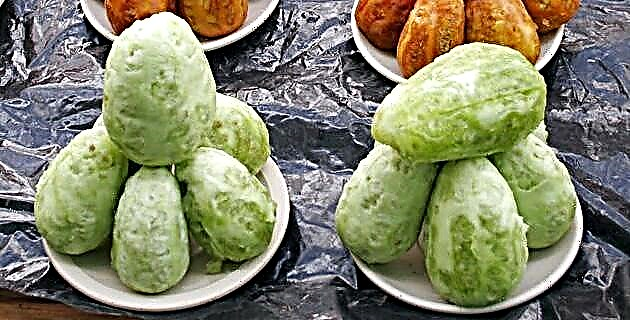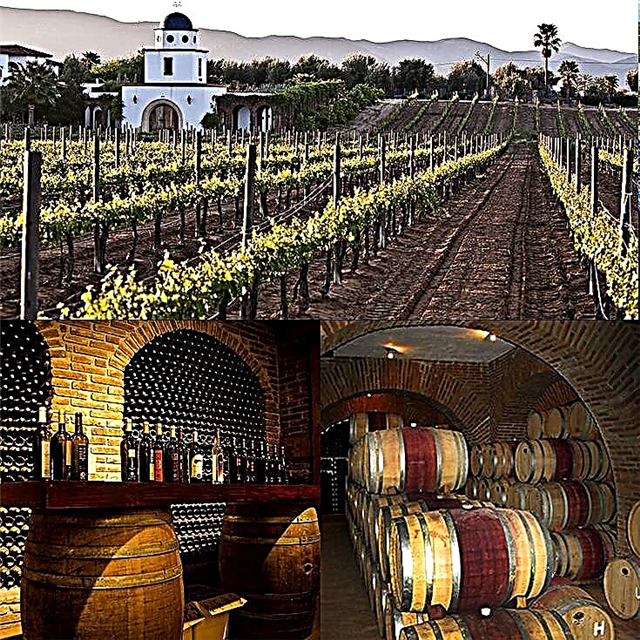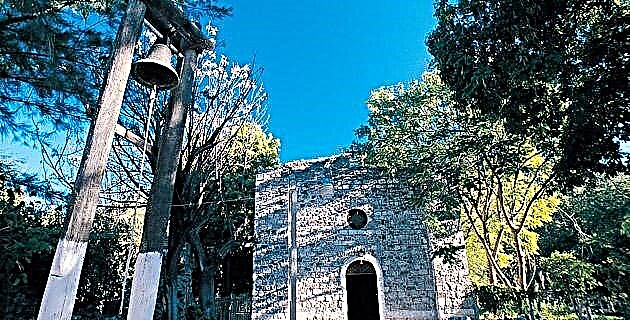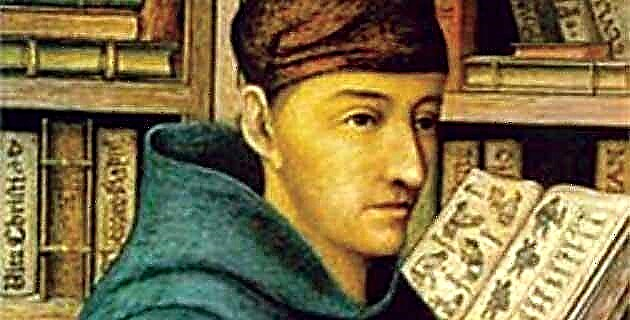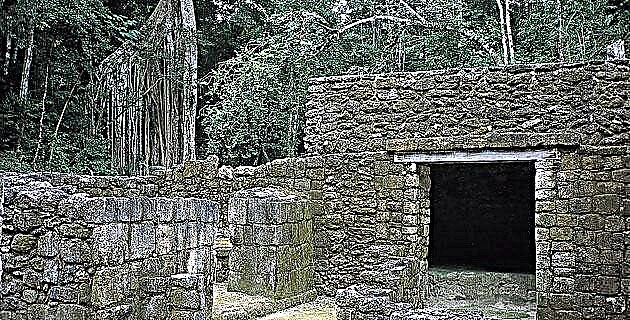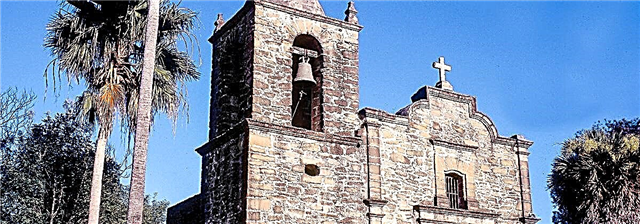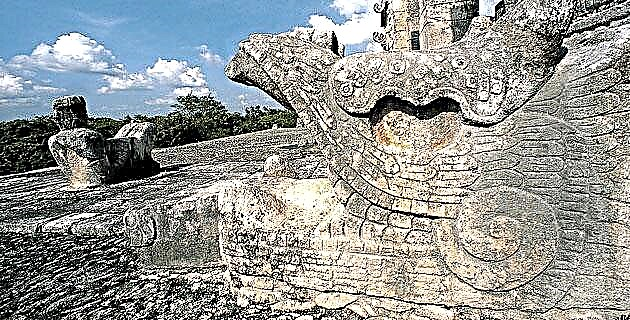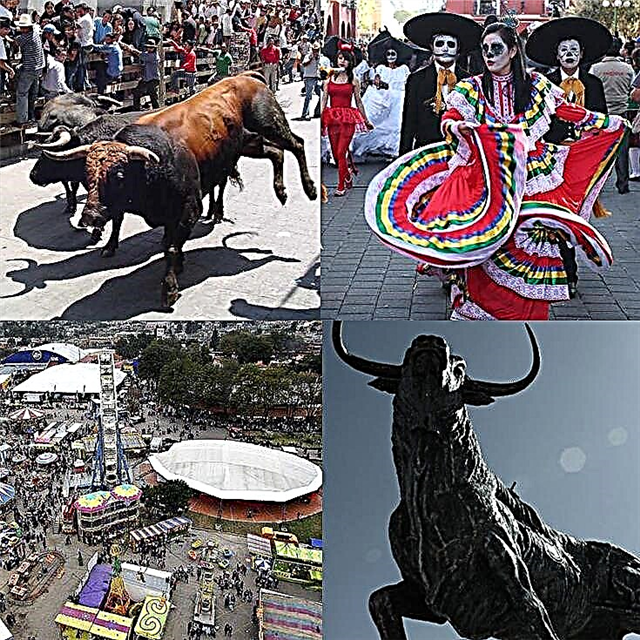La Huamantlada is the most anticipated bullfighting show during the Virgen de la Caridad festivities, which take place in August in the Magic Town tlaxcalteca de Huamantla. We invite you to discover this modern and exciting tradition.
1. What is the Huamantlada?
It is a striking bullfighting show that begins at 12 noon on the last Saturday of the Virgen de la Caridad festivities in the streets of the Mexican city of Huamantla, in the state of Tlaxcala. Similar to what happens in the Spanish city of Pamplona during the San Fermín fairs, several bulls run through the streets of the city, amidst the fervor of the public, part of which goes in front of and behind the animals, while most watch from behind the barriers.
For the occasion, the facades of the houses that are in the streets where the fighting bulls run are adorned and the public, mostly male, wears brightly colored clothes. As in Sanfermines, the event has its risks and its critics, but it is defended by its supporters as a tradition that must be preserved and as an important source of income for the town, given the huge number of people that the show brings together. This cultural manifestation has the organizational support of the Institute of Culture and Tourism of the State of Tlaxcala and the Tlaxcalteca Institute of Bullfighting Development.
2. How did the Huamantlada originate?
The first Huamantlada took place on August 15, 1954, when several huamantecos fans of the brave festival, among which were Don Eduardo Bretón González, Don Manuel de Haro, Don Sabino Yano Sánchez, Don Miguel Corona Medina and Don Raúl González, some of whom had witnessed the Sanfermines, decided to do a running of the bulls in Huamantla just like the Pamplonada they do in Pamplona.
In the Pamplonada, the animals are released from the corral and run through the streets until they reach the bullring, where they are fought. In the first running of the Huamantlada, 6 specimens from Piedras Negras were fought, the legendary Tlaxcala cattle ranch with more than 150 years of experience in the breeding of fighting bulls. The first poster for Huamantlada was made up of Manuel Capetillo, Rafael García and Jorge Aguilar El Ranchero. This format of running the bulls through the streets until they were taken to the bullring to fight them was maintained until the end of the 1960s, when it was changed at the request of the matadors.
3. Why was the format of the Huamantlada changed?
For more than 10 years, the Huamantlada was carried out in the same way as the Sanfermines of Pamplona and the bulls frequently did not arrive at the arena in the best conditions to carry out a good fight. The public attending the show increased year after year, so there was never a lack of spontaneous ones who on the way to the plaza gave a blow to a bull and the animals did not arrive in optimal condition to face the bullfighter, which also represented a danger additional for the matador. The bullfighters began to protest and refuse to fight, until the format was changed to another in which after a race that does not leave them exhausted, the bulls are fought in boxes in the same streets.
Another thing that has changed is the security of the event. At first, people crowded the streets to watch the bulls pass, with little protection. As interest in the Huamantlada has increased, increasing the influx of people, measures have been taken for the comfort and safety of the people. The streets where the bulls will run are signposted and protective fences and burladeros are placed, and whenever possible, stands are installed so that part of the public can see the performance seated. The number of streets dedicated to the bullfighting festival and the number of bulls fought has also increased, which has gone from 6 in the initial Huamantlada to 7, 12, 15, 20, 25 and even more than 30 bulls.
Of course, security is never complete and those attending the Huamantlada must be aware that the event involves a certain risk, so it is essential to behave with the utmost caution. One of the things that should be avoided the most is trying to interact with the bull, especially if you do not have any experience in dealing with these brave animals, as is the case with most people.
4. What to do before and after the Huamantlada?
During the Huamantlada, the Magical Town of Huamantla is in full swing of the Virgen de la Caridad. It is possible that the Huamantlada coincides with August 14 and 15, when the "Night that Nobody Sleeps" takes place. On the night of August 14, the huamantecos and many tourists make a festive vigil, while they line the streets through which the procession of the Virgin will pass with beautiful colored sawdust rugs, which are true works of popular art. The procession leaves around 1 AM on the 15th.
Likewise, you can take advantage of your visit to Huamantla on the occasion of the Huamantlada, to know the architectural attractions of the city, such as the Church of Our Lady of Charity, the former convent of San Luis, the Temple of San Luis and the Municipal Palace. Likewise, you can take a tour of the Bullfighting Museum and the National Puppet Museum, in which more than 500 of these pieces are exhibited, coming from the collection of Rosete Aranda, the longest-running puppet company in the country. This puppetry company was born in Huamantla in 1835 and offered functions until 1958, including one witnessed by President Benito Juárez.
Perhaps you have time to get to know some of the fighting bulls breeding farms that have a seat very close to Huamantla and that feed the local and national passion for the brave festival with their fierce antlers. And of course, you cannot stop enjoying the delicious Huamanteca and Tlaxcala gastronomy, since the Magic Town dresses up offering its best dishes and drinks, such as mixiote, muéganos and pulque.
May you fully enjoy the Huamantlada!


